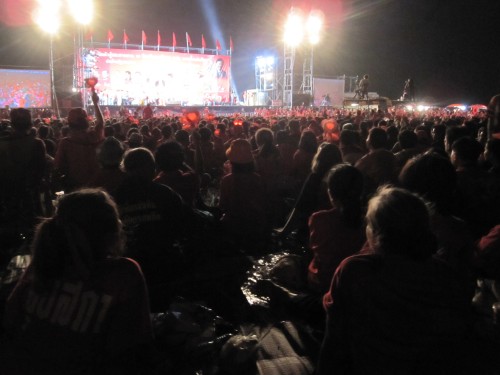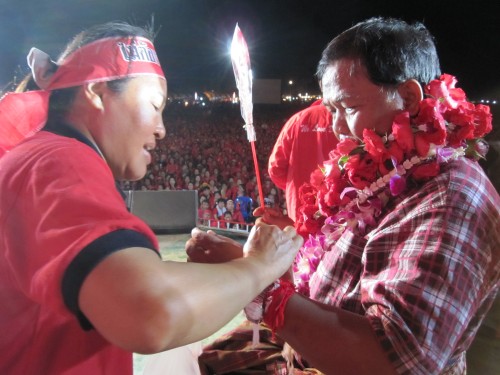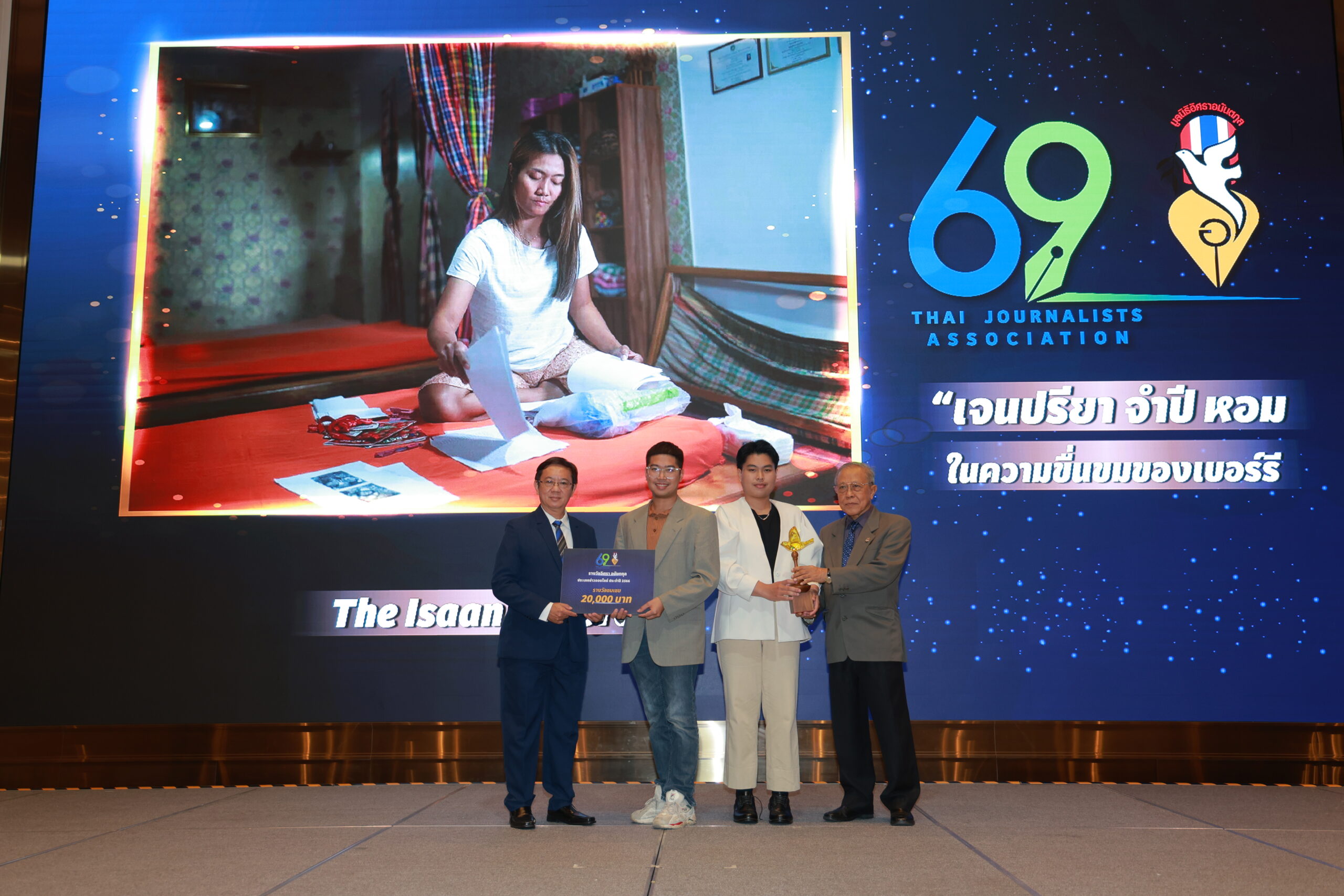KHON KAEN – Nineteen newly elected red shirt committee members, representing each of the Northeastern provinces, led a rally for the first time on Thursday to establish themselves as the movement’s new Isaan representatives and celebrate the release of eight red shirts on February 22.

Red Shirt supporters cheering in fron of the stage. Photo credit: Lukas Winfield
Over 10,000 supporters cheered on as they heard from both newly elected and newly discharged leaders of the movement.
After over nine months of detention, red shirt leaders Kwanchai Sarakham, Nisit Sinthuprai, Natthawut Saikua, Wiphuthalaeng Pattanaphumthai, Yossawaris Chuklom (also known as Jeng Dokchik), Korkaew Pikulthong, Weng Tojirakam, and red shirt guard Pichet Suchindathong, were released on bail for terrorism charges following the April-May crackdown of anti-government protests.
Only three days out of prison, Kwanchai reminded his audience to look forward.

Kwanchai Sarakham receives a bracelet from a fan. Photo credit: Lukas Winfield
“This is a big day for the Isaan leaders. Today, they have selected the committee for Isaan and solidified all the positions. The committee develops our strategies and gives guidance to the red shirt movement,” he announced.
Among these strategies is their ongoing non-violent push for the release of over 100 red shirts who remain in detention and have yet to be granted bail.
Thida Tojirakarn, who was named a leader of the movement after the arrest of her husband Weng Tojirakam, said the release of prisoners was a good sign.
“It shows that negotiations with the government are possible and that the government can be flexible,” she encouraged her supporters. “They were released because of the effort red shirts put in visiting prisoners and demanding documents from the government.”





